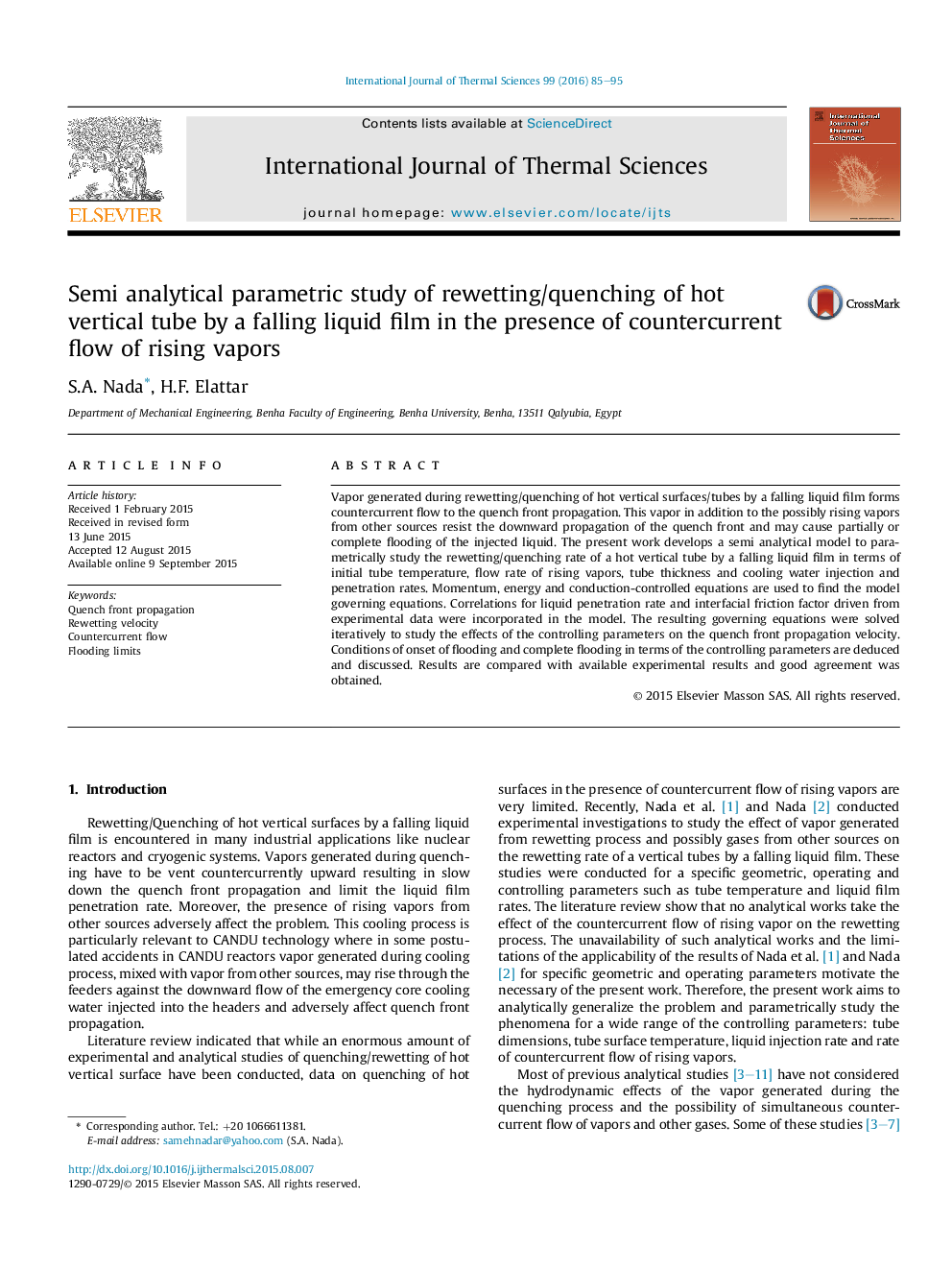| Article ID | Journal | Published Year | Pages | File Type |
|---|---|---|---|---|
| 669229 | International Journal of Thermal Sciences | 2016 | 11 Pages |
•A model for rewetting of hot vertical tube in presence of rising vapor is presented.•Parametric study on the rewetting velocity in presence of rising vapor is conducted.•Effect of generated vapors on onset and complete flooding conditions is evaluated.
Vapor generated during rewetting/quenching of hot vertical surfaces/tubes by a falling liquid film forms countercurrent flow to the quench front propagation. This vapor in addition to the possibly rising vapors from other sources resist the downward propagation of the quench front and may cause partially or complete flooding of the injected liquid. The present work develops a semi analytical model to parametrically study the rewetting/quenching rate of a hot vertical tube by a falling liquid film in terms of initial tube temperature, flow rate of rising vapors, tube thickness and cooling water injection and penetration rates. Momentum, energy and conduction-controlled equations are used to find the model governing equations. Correlations for liquid penetration rate and interfacial friction factor driven from experimental data were incorporated in the model. The resulting governing equations were solved iteratively to study the effects of the controlling parameters on the quench front propagation velocity. Conditions of onset of flooding and complete flooding in terms of the controlling parameters are deduced and discussed. Results are compared with available experimental results and good agreement was obtained.
